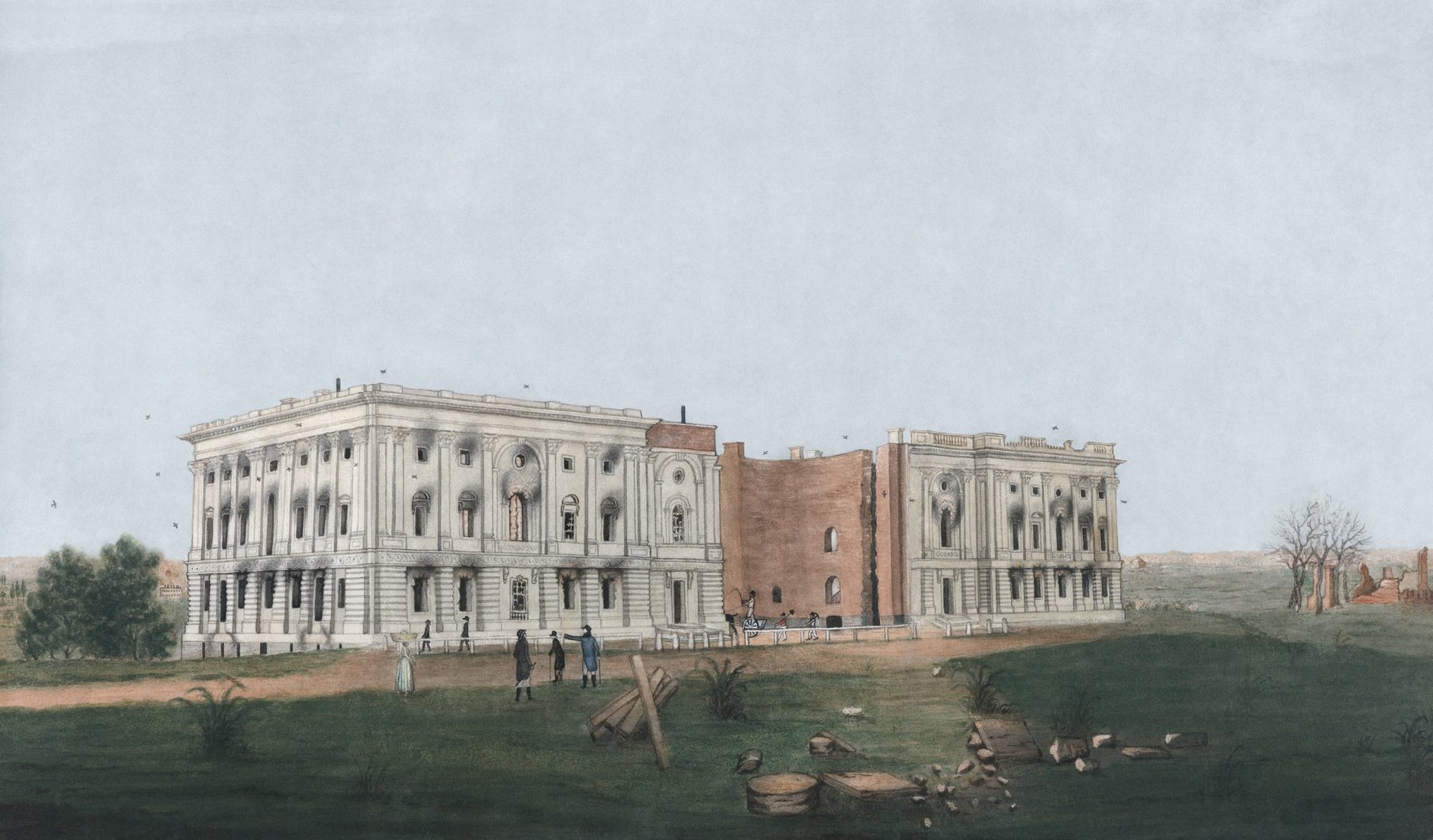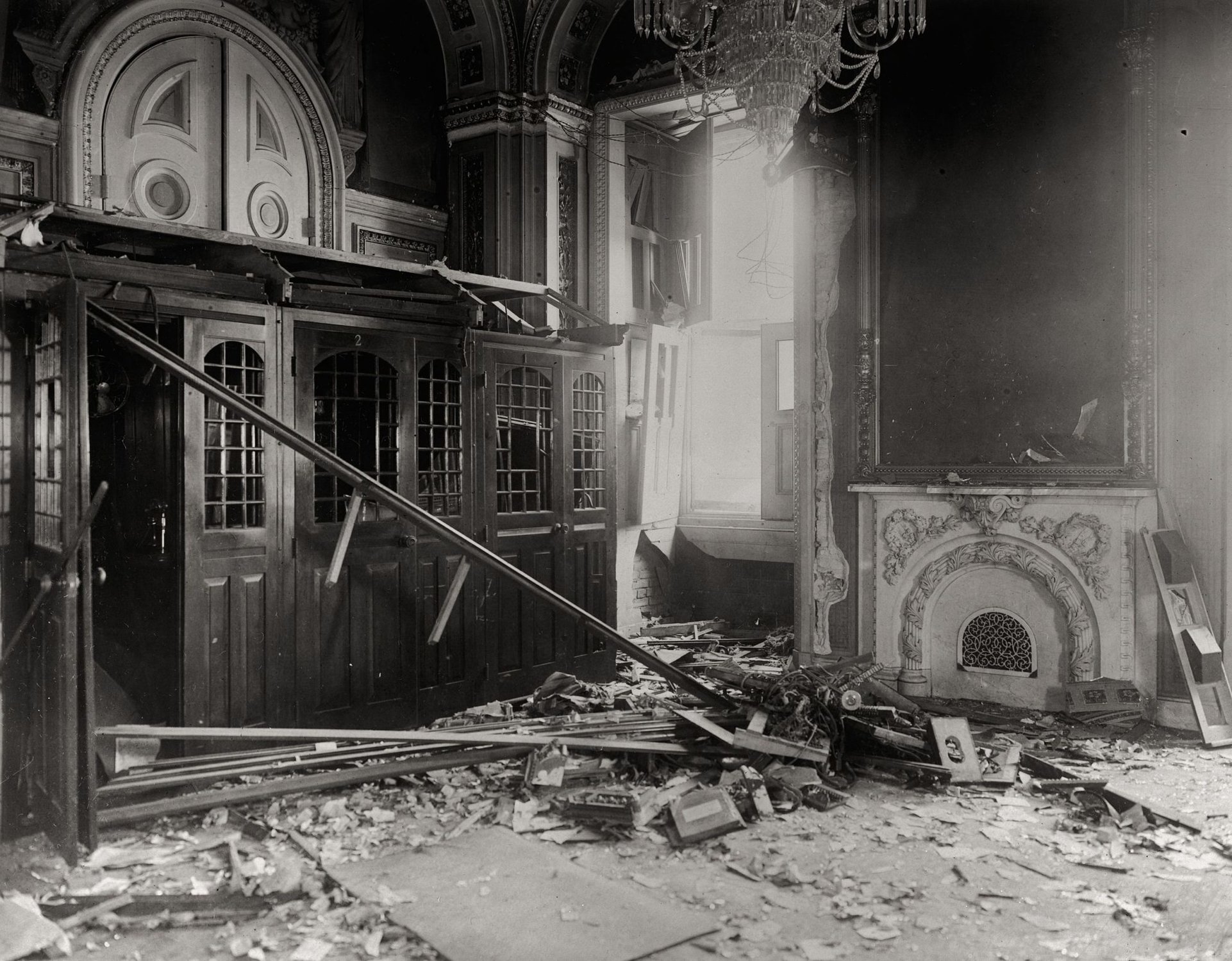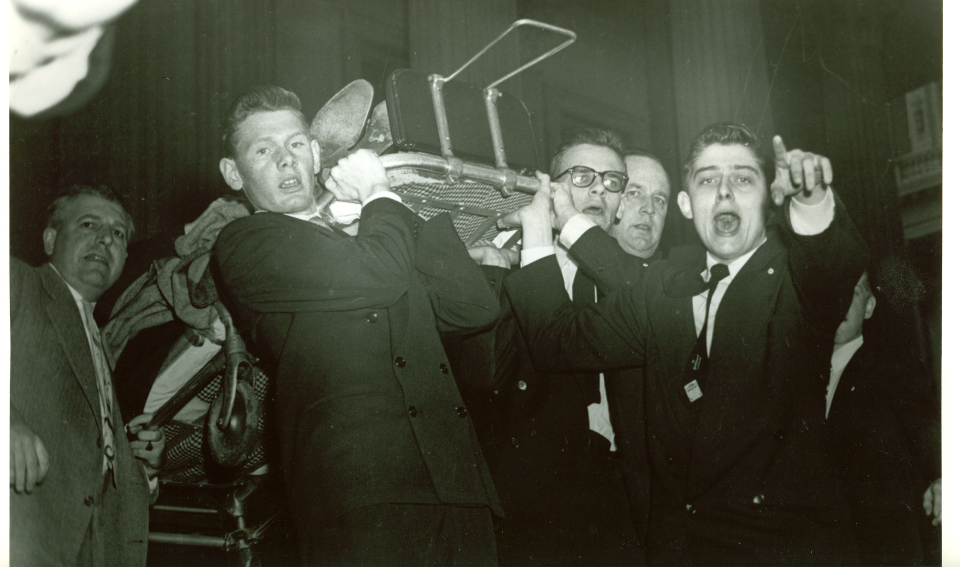
Photo courtesy of the Architect of the Capitol.
On Wednesday, Jan. 6, an angry mob besieged the nation’s Capitol building, and immediately images emerged showing masked agitators waving Confederate flags in the halls of the Senate. The unprecedented revolt on the grounds where Congress was meeting to certify the 2020 presidential election opened questions as to whether an assault like this has occurred at any other times throughout history.
In 1791, President George Washington chose an area that would become the District of Columbia from land ceded by Maryland. One of the surveyors hired to oversee the site put French engineer Pierre Charles L’Enfant in charge of the plan for the new city of Washington, DC. He located the Capitol building on an elevated position then known as Jenkins’ Hill, which he called “a pedestal waiting for a monument.” Two years later on Sept. 18, 1793, Washington laid the cornerstone of the US Capitol with Masonic ceremonies. Since its inception over 200 years ago the US Capitol building has seen its share of fistfights, fires, shootings, and even bombings.
British Troops Set Capitol Building Ablaze

Benjamin Henry Latrobe was the first professional architect to work in the United States. He was in charge of renewing the construction of the Capitol building in 1804 after a series of delays, and later recalled British troops setting it ablaze in 1814 during the War of 1812. When American troops set fire to a capital in colonial Canada, the British retaliated with burning federal buildings in Washington, including the White House and the Capitol building. Latrobe described the destruction as “the most magnificent ruin,” and despite the heavy damage, a timely rainstorm rolled in to put out the flames before it was completely destroyed.
Congressman Cane Beatdown

On May 22, 1856, Rep. Preston Brooks of South Carolina took the cane he typically used for assistance after suffering a gunshot wound during a duel in 1840 and swung it with fury at Massachusetts Sen. Charles Sumner. The violent outburst came after Sumner, a vocal abolitionist against slavery, delivered a two-day speech to Congress calling out colleagues by name. Brooks’ cousin, South Carolina Sen. Andrew P. Butler, an elderly and sick gentleman, was one of the congressmen called out even though he was absent from the proceedings. In order to defend his honor, Brooks delivered a savage beatdown on the senator from the North and became an instant hero in the South. The fight ended when other congressmen stepped in to prevent further mayhem. Brooks later recalled he chose this method of punishment because he didn’t want to break the 1839 law that made congressional dueling illegal, thus his cane was a suitable alternative.
German Harvard Professor’s Time Bomb

Erich Muenter was a German professor at Harvard University who wore patched suits and was viewed as ostensibly harmless. The respected academic also lived another life behind closed doors. He poisoned his wife with arsenic for unknown reasons, assumed the alias “Frank Holt” in Texas, and later became a professor in German for Cornell. It was on July 2, 1915, a Friday afternoon, when he tried his most serious crime yet. Frustrated with the ongoings of World War I taking place across Europe, Muenter acquired three sticks of dynamite and created a time bomb to go off near the Senate chambers toward midnight. He placed the device in a reception room to limit casualties, walked out on his own accord, and hopped on a train when he heard the explosion. He explained his actions using a pen name in a letter that was published by the Washington Evening Star. The letter stated that he hoped the detonation would “make enough noise to be heard above the voices that clamor for war,” and “this explosion is an exclamation point in my appeal for peace.” The final act of his crime spree involved shooting J.P. Morgan in the financier’s home because he wanted to stop the shipping of munitions for the war effort; Muenter was caught soon thereafter.
Gunfire in the House

On March 1, 1954, four assailants entered the visitor’s gallery that overlooks the House of Representatives floor. The three men and one woman belonged to the Puerto Rican Nationalist Party and were on a personal mission to argue for the independence of Puerto Rico from the United States. Around 2:30 p.m. they got up from their seats, pulled out the handguns they had snuck in, and began firing. Five congressmen were wounded in the shooting, and three of the four shooters were apprehended moments later. The fourth escaped and was captured later that afternoon.

Matt Fratus is a history staff writer for Coffee or Die. He prides himself on uncovering the most fascinating tales of history by sharing them through any means of engaging storytelling. He writes for his micro-blog @LateNightHistory on Instagram, where he shares the story behind the image. He is also the host of the Late Night History podcast. When not writing about history, Matt enjoys volunteering for One More Wave and rooting for Boston sports teams.
BRCC and Bad Moon Print Press team up for an exclusive, limited-edition T-shirt design!
BRCC partners with Team Room Design for an exclusive T-shirt release!
Thirty Seconds Out has partnered with BRCC for an exclusive shirt design invoking the God of Winter.
Lucas O'Hara of Grizzly Forge has teamed up with BRCC for a badass, exclusive Shirt Club T-shirt design featuring his most popular knife and tiomahawk.
Coffee or Die sits down with one of the graphic designers behind Black Rifle Coffee's signature look and vibe.
Biden will award the Medal of Honor to a Vietnam War Army helicopter pilot who risked his life to save a reconnaissance team from almost certain death.
Ever wonder how much Jack Mandaville would f*ck sh*t up if he went back in time? The American Revolution didn't even see him coming.
A nearly 200-year-old West Point time capsule that at first appeared to yield little more than dust contains hidden treasure, the US Military Academy said.












